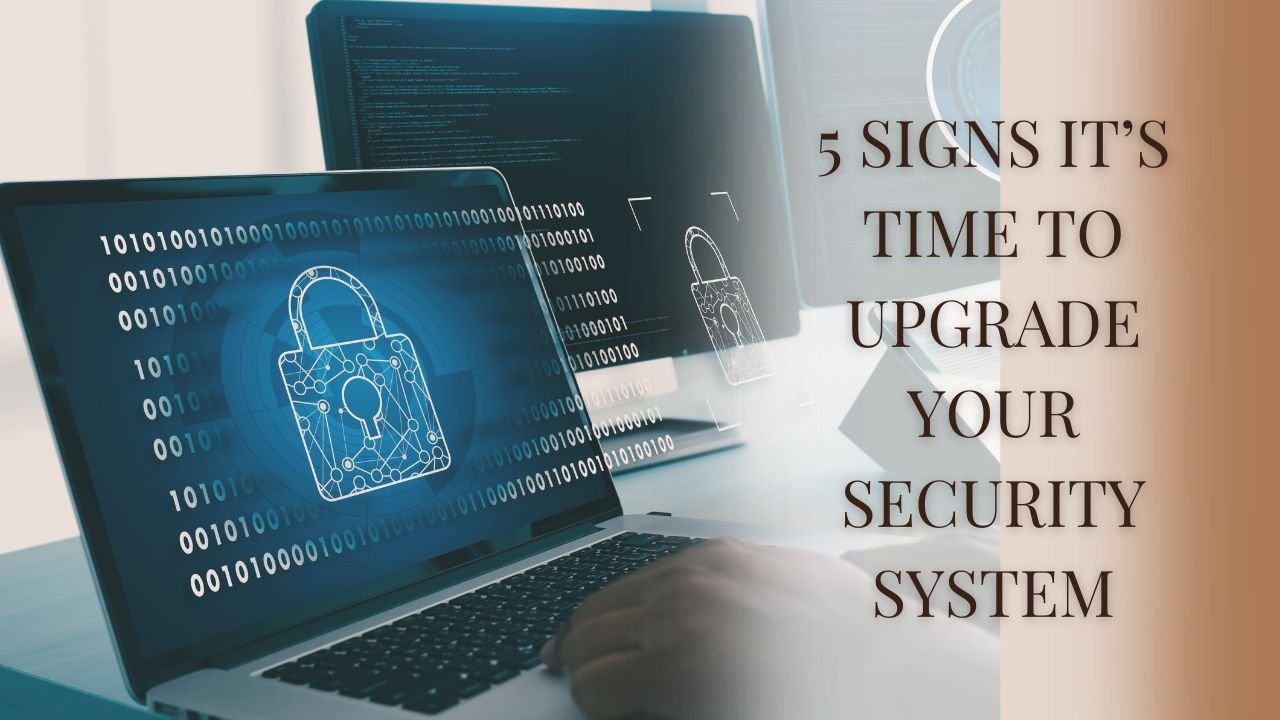Your security system is your first line of defense — the silent guardian that protects your loved ones, valuables, and peace of mind.
But even the most advanced systems have a limited lifespan. As technology evolves, so do criminal tactics and digital vulnerabilities.
Hackers find new ways to bypass outdated software, while physical components like cameras and sensors degrade over time.
Ignoring these changes can lead to blind spots, false alarms, or even total system failure at the moment you need it most. That’s why understanding when and how to upgrade your security system is crucial.
In this article, we break down the five unmistakable signs that your setup needs an upgrade, explore essential modern features, and explain how to ensure your home remains protected through 2025 and beyond.
Your security system is your first line of defense — the foundation that keeps your home, family, and valuables protected. But even the best systems have an expiration date.
As technology advances and criminal tactics evolve, older setups often fail to keep up with modern threats. Components wear down, software becomes outdated, and once-reliable sensors or cameras start missing crucial events.
Rising Number of False Alarms & Missed Alerts
One of the clearest signals that your system is aging is an uptick in false alarms — alerts triggered by non-threats like pets, shadows, or environmental noise.
Older sensors and motion detectors struggle to distinguish real threats from benign motion.
Similarly, if your system is missing alerts — meaning motion or break-ins go undetected — that’s a red flag. Inadequate sensitivity, outdated firmware, or failing components may be to blame.
Why it matters
- False alarms desensitize occupants and may cause police or monitoring services to ignore alerts.
- Missed notifications mean your home isn’t being protected when it matters most.
Incompatibility with Smart Devices & New Tech
If your system does not support smart home integration — with devices like smart locks, doorbells, voice assistants, or automation hubs — it’s already outdated.
Modern systems must communicate via Wi-Fi, Bluetooth, or Z-Wave to create a unified security ecosystem.
AI and machine learning are also transforming how systems operate: behavioral analysis, facial recognition, and anomaly detection are features only newer systems offer.
In 2025, security systems are expected to adopt advanced AI to filter false positives and enhance threat detection.
Aging Hardware & Declining Performance
Hardware age matters. After 5–7 years, cameras, sensors, and control panels begin to wear out. Components may lose calibration, cables degrade, lenses scratch, and image quality deteriorates.
If your system is frequently going offline, showing low resolution, or failing to connect, these are signs of hardware fatigue.
Surge in Crime / Neighborhood Risk Changes
External factors count too. If your local crime rate has increased — burglary, vandalism, or break-ins — your system may no longer be adequate for emerging threats.
Communities and police departments often publish crime maps and alerts. A home security upgrade might be overdue if your area is becoming a target.
You Can’t Monitor / Control It Remotely
One of the biggest advantages of modern systems is remote access via mobile app: live video, remote arming/disarming, alert customization, two-way communication.
If your current system offers only local control — no smartphone integration, no cloud access — you’re operating with limited power. That’s increasingly unacceptable in today’s security standard.
What Features Should a Modern System Have?
Here’s a quick comparison of key features in a next-gen system:
| Feature | Benefit | Why It’s Crucial Today |
|---|---|---|
| AI & Machine Learning | Smarter threat detection, fewer false alarms | Adapts to your environment and filters noise |
| Smart Home Integration | Unified control of locks, cameras, automation | Seamless home experience and enhanced security |
| 4K / HD Cameras & Night Vision | Crisp footage day or night | Vital for identification and evidence |
| Redundant Power / Solar Backup | Keeps system alive during outages | Security must stay online in emergencies |
| Biometric & Multi-Factor Access | Stronger guarding of entry points | Prevents unauthorized access and hacking |
Upgrading gives you access to all these features — features your current system likely lacks or struggles to support.
Why So Many Homeowners Are Upgrading in 2025
- The home security market is booming: over 13 million U.S. households are expected to install new systems this year.
- More than 50% of homes now include at least one security camera.
- Brands are integrating AI, cloud storage, and biometric locks to stay competitive.
These trends show that security is no longer an afterthought — it’s integral to modern living.
How to Upgrade Smartly
- Audit your current system — Test sensors, cameras, connectivity, and response times.
- Choose modular systems — Let you upgrade components over time rather than replacing everything.
- Opt for professional installation + monitoring — Experts ensure coverage and clean integration.
- Ensure cybersecurity safeguards — Prioritize encrypted communication, regular firmware updates, strong passwords, and devices certified under trusted marks like the US Cyber Trust Mark.
- Plan for the future — Make sure your system can support new features or expansion, like more cameras or sensors, in the future.
Recognizing the signs of an outdated security system is more than a tech exercise — it’s about safeguarding your family, property, and peace of mind.
An unreliable or outdated system not only leaves you exposed to modern security threats but also limits your ability to respond in real time.
Whether it’s aging cameras, poor connectivity, or lack of smart integration, ignoring these warning signs can have costly consequences.
Upgrading to a smart, AI-driven, cloud-connected system gives you more control, better awareness, and faster alerts. It’s not just about keeping intruders out — it’s about creating a future-ready home that protects everything you value.
Don’t wait for an emergency to expose vulnerabilities. Upgrade today, and enjoy the confidence that comes from knowing your home security system is ready for tomorrow’s challenges.
FAQs
How often should I upgrade my security system?
Typically every 5 to 7 years, or sooner if you notice degrading performance, loss of compatibility, or new feature gaps.
Can I upgrade parts of my system instead of fully replacing it?
Yes. Modular systems let you replace cameras, sensors, or the hub over time. But ensure they’re compatible or interoperable.
Is professional monitoring necessary?
While DIY monitoring is possible, professional monitoring adds a critical layer — emergency services can respond even if you’re unavailable.




